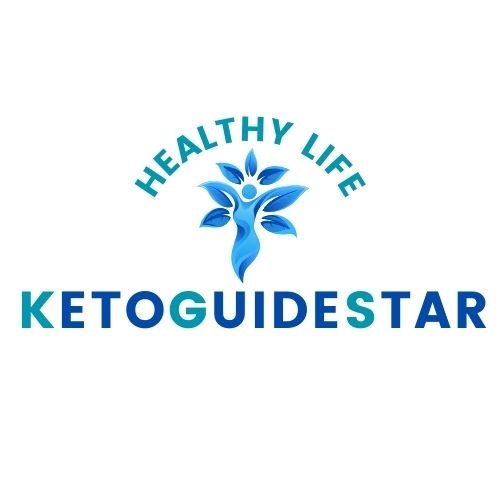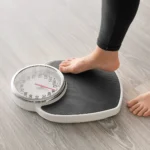Are you struggling to lose weight, even with keto and intermittent fasting? Frustrated with a slow metabolism that seems to hold you back? Imagine finally breaking through that plateau and experiencing effortless fat loss. In this post, I’ll reveal a powerful tip for faster fat loss that helped me overcome my weight loss struggles and achieve incredible results. I followed these steps and got amazing results in melting fat and losing weight.
Get ready to transform your body and unlock your fat-burning potential!
Table of Contents
Brief The Article:
What is the tip for faster fat loss?
- Focus on letting your body dictate when to eat and practice prolonged fasting.
Who is this information for?
- This advice is primarily for individuals who have experience with keto, are plateaued, and are at one meal a day. It is not recommended for beginners.
How can you verify if you are in ketosis?
- Check urine or blood for ketones.
- The most important indicator: No hunger. If you feel hungry or have cravings, you may not be in ketosis, possibly due to:
What should you do about eating?
- Only eat when truly hungry.
- If you are not hungry, do not eat, as it can spike insulin and halt fat loss.
What is crucial for maintaining your health while fasting?
- Consume enough sea salt (1 teaspoon per day) and ensure adequate electrolyte levels (potassium, magnesium).
- Consider taking B vitamins and drinking green tea to support your fasting process.
What is the distinction between fasting and starvation?
- Fasting: Depleting glycogen reserves and burning fat.
- Starvation: Depleting fat reserves and beginning to consume organs and muscle.
What are the benefits of fasting beyond weight loss?
- Stem cell enhancement – Anti-aging effect through new cell generation.
- Growth hormone stimulation – Promotes anti-aging more effectively than exercise.
- Growth of new brain cells.
- Improved mood.
- Reduced inflammation.
- Autophagy – The body’s process of cleaning damaged proteins and microbes.
- Enhanced immune system.
How long should you fast?
- Fasting durations can vary: it could be 30, 40, or even 72 hours or more. Listen to your body and continue fasting until it signals you to eat.
So let’s dive into the details…
Tip for Faster Fat Loss
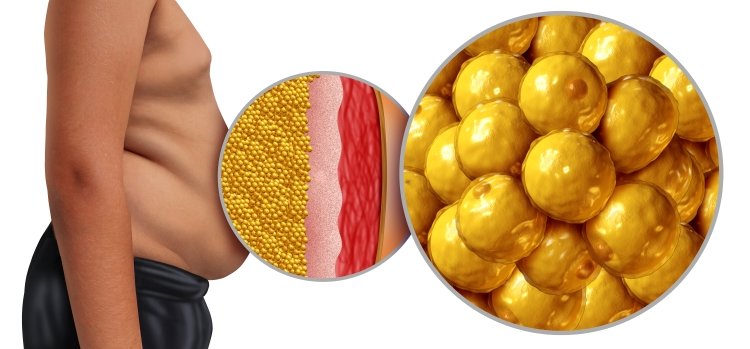
Hey guys, I have another powerful tip for faster fat loss for you. This is about achieving faster fat loss for a slow metabolism.
Let’s say, for example, you’re on keto, you’re doing intermittent fasting, you’ve even got to one meal a day, and things are still slow. What do you do to speed things up?
This topic is not really meant for the new person starting keto. If you’re that person, watch the topic down below. I wouldn’t recommend doing this.
This is mainly for the person who has done keto for a while, they’re plateaued, they’re stuck, and things are slow, and they’re at one meal a day, and now they’re like, “What do I do?”
key points
- Target audience: Experienced keto dieters
- Not recommended for beginners
- Aimed at breaking through plateaus
Verifying True Ketosis for Effective Fat Burning

So the first thing you need to do is figure out: are you really in ketosis? Yes, you can check the urine, the blood to find out if you’re showing ketones,
but this one other thing I’m going to tell you is like the most important thing to know that you’re really in hardcore fat burning, and that is this: no hunger. Your hunger has completely gone away.
So if you’re craving things or you’re hungry, then chances are you’re probably not in ketosis. You’re maybe eating too many carbs or you’re doing something wrong.
You’re having snacks, your protein’s too much, it could be any number of things. So once the hunger goes away, then we know you’re burning fat.
You’re burning your own fat and you’re living off those calories. Okay, that’s a good thing.
key points
- Key indicator of ketosis: No hunger
- Possible reasons for not being in ketosis:
- Eating too many carbs
- Having snacks
- Consuming too much protein
Essential Tip for Faster Fat Loss: Eat Only When Hungry

Alright, this next thing is very, very important: you don’t want to eat food unless you are hungry. Okay? Why would you want to eat if your body is actually eating already?
So you’re actually living off your fat, you’re releasing your fat cells, your body’s running fine, you feel energetic, you feel good, and then you eat.
Even if it’s one meal a day, you’re eating, and all of a sudden now we spike insulin and then we stop our fat loss. Okay? That’s really what’s happening, especially if you have a slow metabolism.
So if you’re not hungry, okay, don’t eat. Alright? Ride the wave.
Let your body tell you when to eat. Your body may be in a situation where you have a lot of excess energy to use up, and when you eat, you stop that fat burning.
So you basically want to stay in the fast until your body dictates you should eat.
key points
- Key tip for faster fat loss: Don’t eat unless hungry
- Eating unnecessarily can:
- Spike insulin
- Stop fat loss
- Listen to your body’s hunger signals
Supplementation for Optimal Fasting
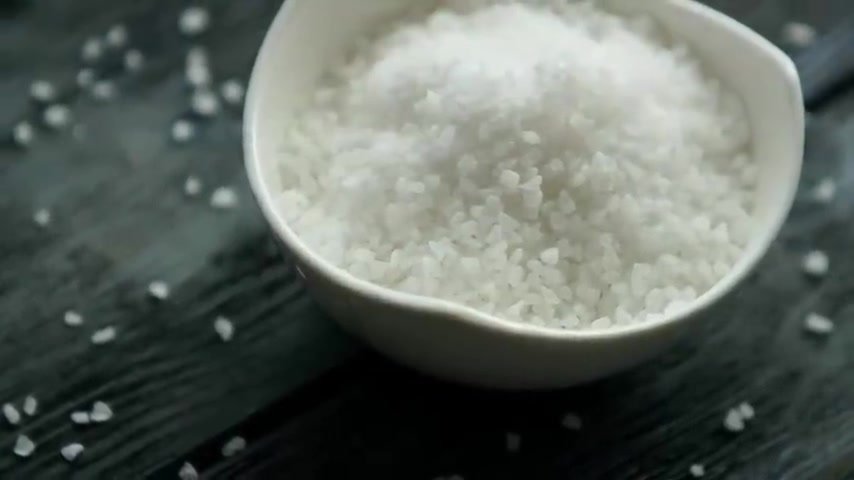
Now, the other very important point is to make sure you’re consuming enough sea salt. And I’m talking like one teaspoon of sea salt per day.
You can dissolve it in water and then spread it out through the day. I wouldn’t recommend drinking the whole thing at one sitting, but because you’re not eating,
you don’t have enough food to put it on, so spread out through the day and consume at least one teaspoon of sea salt per day.
Okay, electrolytes are essential just because we want to keep the potassium, the magnesium very high in the body so we can run the organs.
And we’re using our reserve to provide nutrients, but we don’t know if you have those nutrients plentiful in the body or not. So just take a little bit of electrolytes.
B vitamins, I recommend you take these too. These three things will greatly help you when you’re fasting. I also recommend you get a good green tea to actually help you do this comfortably as well. It’s going to make it easier.
Recommended supplements:
- Sea salt (1 teaspoon per day)
- Electrolytes
- B vitamins
- Green tea
Understanding Fasting vs. Starvation
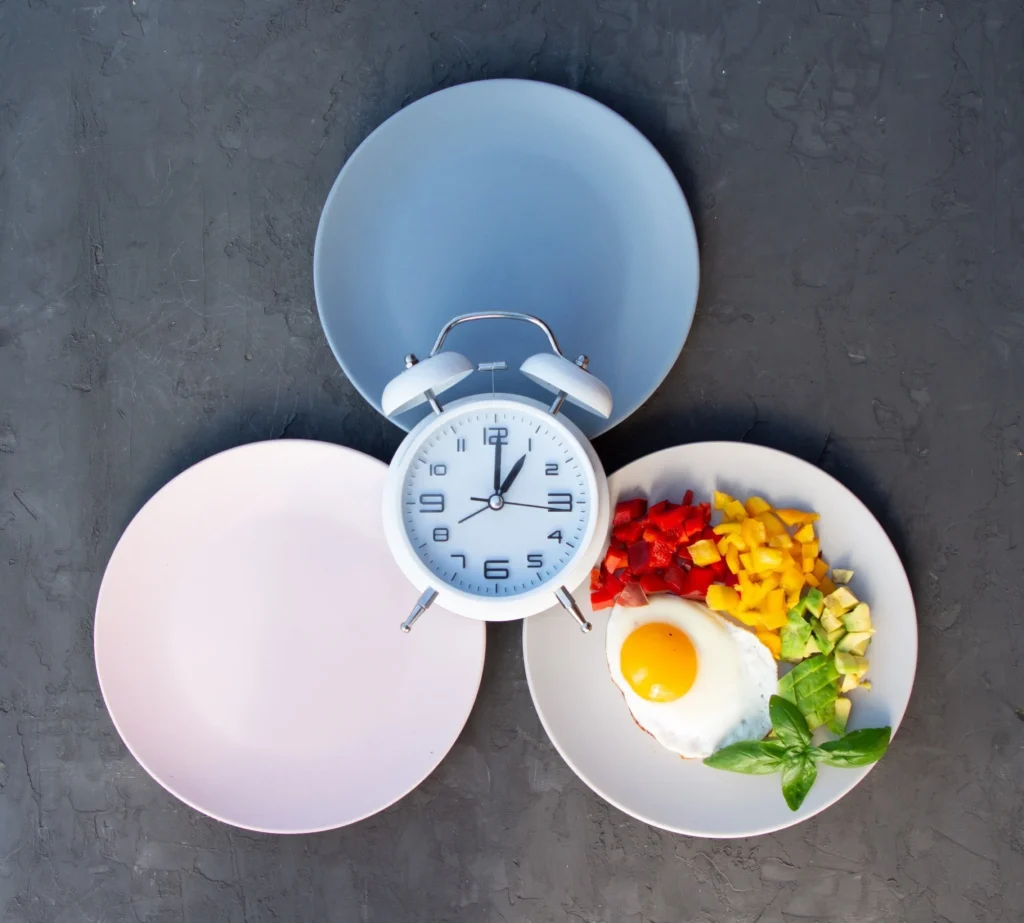
So also realize that you’re not starving. Fasting is the depletion of glycogen, that’s sugar reserve, and then the burning of fat. Okay?
So you no longer have your glycogen reserve, you’re living off your fat. Starvation is when you deplete all your fat reserves and now you’re eating your organs and your muscle.
So when you’re fasting, you’re tapping your fat reserves. So if you have a lot of excess fat, you’re not going to starve. Okay? It’s gonna be a long time before you starve.
key points
- Fasting: Depleting glycogen and burning fat
- Starvation: Depleting all fat reserves and consuming organs/muscle
Benefits of Fasting Beyond Weight Loss

But the benefits of fasting are huge and they go way beyond weight loss. So stem cell enhancement, that’s the cells that replace your cells and actually give you like it’s like an anti-aging effect.
You get new cells, and growth hormone enhancement. You can stimulate growth hormone, which is the anti-aging hormone, way more than even exercise.
Growing new brain cells, I mean who couldn’t benefit from a couple of extra brain cells, right? Your mood starts coming up, your inflammation drops, you go into autophagy, which is the body’s ability to clean itself from old damaged proteins. Okay?
And also clean up the microbes and enhance the immune system.
Benefits of fasting:
- Stem cell enhancement
- Growth hormone stimulation
- New brain cell growth
- Improved mood
- Reduced inflammation
- Autophagy
- Enhanced immune system
Implementing the Tip for Faster Fat Loss
So the main point of this tip for faster fat loss is to let your body dictate when you need to eat and practice some prolonged fasting.
And who knows, it could be 40 hours, it could be 30 hours, it could be 72 hours, it could be longer. Just ride the wave, keep going.
So your body is actually happy now, it can burn off the fat, and if you feed it too frequently, it’s going to stop that process.
Thanks for rading. If you’re liking this content, I will actually keep you updated on future topics, including more tips for faster fat loss.
latest Posts
- A Powerful Tip for Faster Fat Loss: Breaking Through Slow Metabolism
- The Metabolism Myth: Why Boosting Metabolism Does Not Work 🤔
- Breaking Through Your Weight Loss Plateau: A Comprehensive Guide
- Vegetarian Keto Diet Plan Free Pdf
- High vs Low Metabolism For Fat Burning
Summary
For those people who are trying to lose weight in the belly, and have been doing lots of past dieting and created a slow metabolism – you need to extend your fast longer and longer.
The big mistake is to eat when you are hungry. If you are fasting and your body is burning fat with no hunger, why eat? Your body IS eating its own fat and when you eat you shut down this process.
Things to do:
- First, figure out if are you really in ketosis. – The fastest way to figure out if you are in the hardcore fat-burning state, is “No Hunger!!”
- Don’t eat unless hungry
Let your body dictate when to eat.
Make sure to consume enough sea salt/electrolytes / B vitamins / green tea - You’re not starving – Fasting is the depletion of glycogen or sugar reserves and the burning of fat. Whereas, starvation is you deplete all your fat reserves and now you’re eating the organs in your muscle.
Benefits of Fasting:
- Stem cell enhancement
- Growth hormone enhancement
- Growing new brain cells
- Lower Inflammations
- Autophagy – the body’s ability to clean itself from old damaged proteins, clean up the microbes, and enhance the immune system.
FAQ
How Can I Speed Up My Fat Burning Metabolism?
Strategies to Boost Your Metabolic Rate
To speed up your fat burning metabolism, consider the following strategies:
- Exercise Regularly:
- High-Intensity Interval Training (HIIT): Incorporate HIIT workouts, which involve brief periods of intense exercise followed by short rest periods. This type of exercise can significantly boost your metabolism and burn fat more efficiently.
- Strength Training: Building muscle through strength training increases your basal metabolic rate (BMR) because muscle tissue burns more calories at rest. Aim for at least two strength training sessions per week.
- Dietary Adjustments:
- Protein-Rich Foods: Eat plenty of protein, as it increases the thermic effect of food (TEF), meaning your body burns more calories to digest it. Protein requires 20-30% of its usable energy for metabolism, compared to 5-10% for carbs and 0-3% for fats.
- Regular Meals: Ensure you eat regular meals throughout the day to prevent extreme swings in hunger and fullness. Avoid late-night snacking.
- Adequate Sleep:
- Quality Sleep: Get enough sleep, as sleep deprivation can negatively impact your metabolism. Aim for seven hours of sleep per night.
- Stay Active:
- Daily Activity: Increase your daily physical activity, including non-exercise activity thermogenesis (NEAT) such as walking around the house, gardening, or fidgeting. These activities can burn an additional 100 to 800 calories per day.
- Supplements:
- Green Tea: Consider drinking green tea, which contains caffeine and catechins that can help increase your metabolism and burn additional calories.
Example Routine
- Morning: Start with a HIIT session or strength training.
- Meals: Ensure each meal includes a balance of protein, vegetables, whole grains, and healthy fats.
- Evening: Avoid screens before bed and aim for seven hours of sleep.
By combining these strategies, you can effectively boost your fat burning metabolism.
How Can I Trick My Metabolism into Burning Fat?
Optimizing Your Metabolic Processes
To trick your metabolism into burning fat, focus on the following techniques:
- Listen to Your Body:
- Eat When Hungry: Only eat when you are truly hungry. This helps maintain the fat burning process and avoids unnecessary insulin spikes that can stop fat loss[Your Original Text].
- Intermittent Fasting:
- Prolonged Fasting: Practice prolonged fasting to allow your body to burn stored fat. This can include durations like 30, 40, or 72 hours, depending on your body’s signals[Your Original Text].
- Dietary Adjustments:
- Protein and Healthy Fats: Favor protein and healthy fats over carbohydrates to support a higher metabolic rate. Protein requires more energy to digest, which can help boost your metabolism.
- Physical Activity:
- Fasted State Training: Training in a fasted state can make your body more efficient at burning fat for fuel, increasing your FatMax and metabolic efficiency[Your Original Text].
- Supplementation:
- Sea Salt and Electrolytes: Ensure adequate intake of sea salt (about 1 teaspoon per day) and electrolytes to support your fasting regimen. Additionally, consider taking B vitamins and drinking green tea to aid in the process[Your Original Text].
Example Fasting Regimen
- Intermittent Fasting: Implement a fasting schedule that allows you to eat during a set window (e.g., 8 hours) and fast for the remaining hours.
- Listen to Your Body: Pay attention to your hunger signals and only eat when necessary.
- Supportive Supplements: Consume sea salt, electrolytes, and B vitamins to support your fasting regimen.
By adopting these techniques, you can optimize your metabolic processes to burn fat more efficiently.
What is the 2 2 2 Method Metabolism?
Clarification on the 2 2 2 Method
There is no widely recognized or scientifically validated “2 2 2 method” for metabolism. However, if you are referring to a structured approach to boosting metabolism, here is a general framework that might be useful:
- 2 High-Intensity Workouts:
- Incorporate two high-intensity interval training sessions or strength training workouts per week to build muscle and boost your metabolic rate.
- 2 Balanced Meals:
- Ensure you have at least two balanced meals per day that include protein, vegetables, whole grains, and healthy fats to support optimal metabolic function.
- 2 Rest Days:
- Allow your body two rest days per week from intense physical activity to recover and rebuild muscle, which is essential for maintaining a healthy metabolism.
Example Weekly Plan
- Monday and Wednesday: High-intensity interval training or strength training sessions.
- Daily Meals: Ensure at least two balanced meals each day.
- Friday and Sunday: Rest days or light physical activity.
This structured approach can help you maintain a healthy and active metabolism, but it is not specifically known as the “2 2 2 method.”
How Do You Get Ripped with a Slow Metabolism?
Strategies for Building Muscle with a Slow Metabolism
To get ripped despite having a slow metabolism, focus on these strategies:
- Strength Training:
- Build Muscle Mass: Incorporate strength training into your routine to increase your muscle mass, which will naturally boost your metabolic rate. Aim for at least two strength training sessions per week.
- Protein Intake:
- Adequate Protein: Ensure you consume enough protein to support muscle growth. Protein intake should be around 1.6-2.2 grams per kilogram of body weight daily.
- High-Intensity Interval Training:
- Boost Metabolism: Incorporate HIIT to increase your metabolic rate and burn fat more efficiently.
- Dietary Adjustments:
- Balanced Diet: Focus on a balanced diet that includes vegetables, whole grains, and healthy fats to support overall health and muscle growth.
- Supplementation:
- Green Tea and Other Supplements: Consider adding green tea to your routine, which can help increase your metabolism and burn additional calories.
Example Workout and Diet Plan
- Workout Routine: Strength training sessions on Monday and Wednesday, HIIT on Tuesday and Thursday.
- Diet: Balanced meals with adequate protein intake, including vegetables, whole grains, and healthy fats.
- Supplements: Green tea and other metabolism-boosting supplements.
